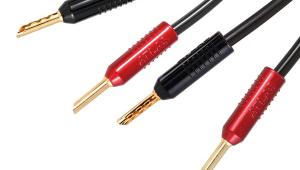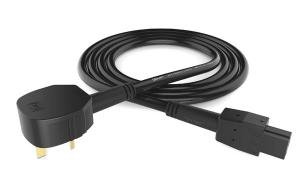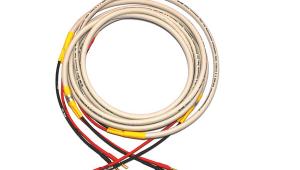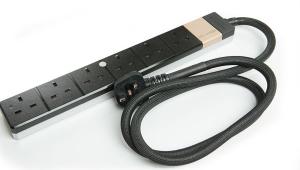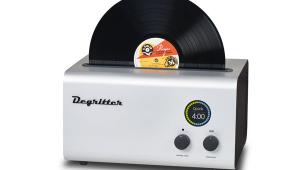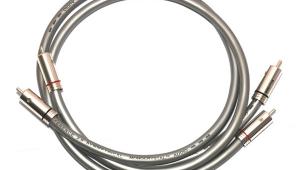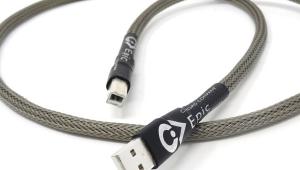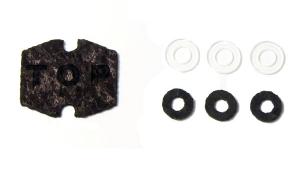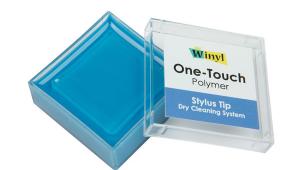Pioneer XDP-100R
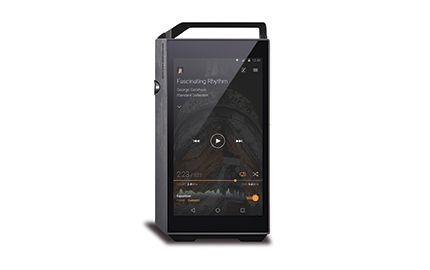
 I own an iPhone but it can’t store half of my digitised music collection or play any of my hi-res DSD, FLAC and ALAC music. I could use a workaround app but I’d need to carry an external DAC and a mains charger to replenish the phone’s battery, which is rapidly drained when playing hi-res music. All this is reason enough to own a separate Digital Audio Player (DAP), never mind the fact that devices like the XDP-100R are built from the ground up.
I own an iPhone but it can’t store half of my digitised music collection or play any of my hi-res DSD, FLAC and ALAC music. I could use a workaround app but I’d need to carry an external DAC and a mains charger to replenish the phone’s battery, which is rapidly drained when playing hi-res music. All this is reason enough to own a separate Digital Audio Player (DAP), never mind the fact that devices like the XDP-100R are built from the ground up.
Pioneer’s first hi-res DAP is compatible with just about every hi-res audio format on the planet including DSD 11.2MHz and 24-bit/384kHz FLAC/WAV. Its claim to fame, though, is that it’s the first portable player that’s able to handle Meridian’s revolutionary Master Quality Authenticated (MQA) lossless format. MQA uses a technique called origami to fold a master recording into a file comparable in size with a CD-quality recording. As well as the benefit of much smaller file sizes than FLAC, MQA is backwards compatible with the FLAC format and can be played at better-than CD quality on any compatible device.
Since the same file can play back in either MQA or FLAC format, music providers don’t need to store multiple versions of the same track, in fact by switching to MQA it reduces the storage needed while offering a better quality product. It’s early days yet for MQA, but at CES in January it was announced that classical label and online download store 2L (2l.no) has become the first company to start selling downloads. Also in the pipeline are the likes of 7digital, Onkyo Music, HQM (Japan) and Tidal, who are all expected to sell or stream MQA tunes in 2016. So the XDP-100R can play MQA in FLAC format, but to play MQA files at MQA quality current samples will require a firmware update, which is expected very soon. The player runs on the Android operating system, which provides easy access to Google’s Play music store. Both Tidal and Onkyo Music come pre-installed, along with Spotify and Qobuz, so you can start listening via wi-fi (subscription dues paid, of course) to relatively high-quality streamed music or purchase and download hi-res music directly (no PC required) from the Onkyo Music app.
The player has 32GB of internal memory – a paltry amount for hi-res albums (even MQA) – but two microSD card slots facilitate a further 400GB of storage – a not insignificant hidden cost of over £200. Physically, the rigid machined aluminium body design bears more than a passing resemblance to Astell&Kern’s slew of hard-edged monoliths. Uniquely though, Pioneer provides removable ‘bumpers’ that protect the top-mounted headphone jack (which doubles up as a line out) and micro-USB on the bottom. The top bumper also makes a useful handle for what is not the most ergonomic of machines. Low-profile power and transport buttons are tricky to select without line of sight. More impressive is the volume knob, which is nicely engineered and offers 160 steps (but you can’t really hear anything below 50, so make that 110 steps). It’s quicker to change volume by pressing the + and – icons onscreen, but the button is handy if the screen is switched off.
Under the bonnet is ESS Technology’s flagship Sabre ES9018K2M DAC and Sabre 9601K amp. The DAC and amp boards are separated from the CPU circuit to minimise the possibility of noise, while the analogue circuitry is consolidated around the headphone jack. Each device has an independent local power supply, allowing for closed loop circuit design and (unlike your average smartphone) audio signals are completely isolated from other blocks to keep them pure. Running on Android and boasting a 720 x 1,280-pixel resolution screen 4.7in across, the player can also be used to view stills and video. I watch some HD music videos on Tidal and am very satisfied with the level of detail, colour fidelity and sharpness.
Harnessed from Pioneer’s expertise in audio networking, the XDP-100R boasts audiophile features such as lock range adjust, digital filter, up sampling to 384kHz, real-time DSD conversion to 5.6MHz and something called Club Sound Boost. High precision mode (2.8 or 5.6MHz) improves signal-to-noise ratio, but drains the battery in the process.
Considering how sophisticated the player is, Pioneer has done a good job of making it straightforward to use. Two features in particular help. One is that you can quickly press a button to hide the album artwork if it clashes with any metadata. The other is that you can swipe up or down to scroll through the control screen, so that accessing the playlist and adjusting the versatile EQ controller is easy. Standalone mode turns off wi-fi, Bluetooth and the LCD to cut off all electromagnetic signals beside audio.
Copying music over is a simple drag and drop process on a Mac, while PC users get the benefit of something called X-DAP Link app. Battery life is between 10 and 15 hours depending on the types of file and how much tinkering you do.
Sound quality
Listening to Spring from Vivaldi’s Four Seasons (a 2.8MHz DSF file) using Oppo’s PM-2 headphone (HFC 402) immediately confirms that this is a highly accomplished performer. The player draws out the subtler harpsichord that is often lost on less able players and blends it adeptly with the lower registers of the many strings. When the higher register of the main violin builds on top with great intensity there’s none of the shrillness that an inferior player exhibits. Instead you have a terrifically balanced ensemble of instruments that’s highly detailed but not overly polished, retaining a pleasing sense of texture as together the hardware and music deliver a wonderfully emotional rendition.
It’s also a pleasure to listen to something like Van Morrison’s Ballerina from Astral Weeks (a 24/192 FLAC) and hear all the warmth and delicacy of the percussion acting as the perfect foil to the twanging bass and enchantment of Van at his vocally mesmerising best. I’m not a huge jazz fan, but Ornette Coleman’s sax on a 192 FLAC of Lonely Woman is exquisitely presented and perfectly anchored to the drums and lightly tapped cymbals that gradually build. It’s as coherent a soundfield as you could wish for. There’s no noise or hiss to mar the action and as I listen to it repeatedly I become totally hooked. You really can’t ask for more from a portable player.
There’s more sax enjoyment with Henry Mancini’s Pink Panther Theme (a 24/96 FLAC), and again there’s none of the grating raspiness exhibited by inferior players. The double bass is perfectly timed as the triangle pings deftly and the piece as a whole is quite simply a winning slice of easy listening. The player’s knack for resolving finer detail doesn’t come at the expense of the overall soundstage. Over on Tidal, New Order’s True Faith pulls me in thanks to a keen sense of attack from the synth and Peter Hook’s bass guitar. Bernard Sumner’s vocals sit a little further back in the mix than I’ve heard elsewhere, but the presentation is authoritative and assured. Also on Tidal, a remastering of The Beatles’ A Day In The Life is quite a thrill with John Lennon’s voice proving utterly beguiling against the guitars and drums. There’s more headroom with streamed content than hi-res files, which requires you to listen at maximum volume to music stored on the player if you’re in a noisy environment. Switching over to Tidal or Spotify from stored music, you will need to temper the volume by about 10 steps or so.
Conclusion
The Pioneer XDP-100R does just about everything you could want from a portable player. With MQA playback assured, it’s easily the best sub-£500 hi-res portable especially for those who also want to listen in to hi-res streaming services. AJ
DETAILS
PRODUCT: Pioneer XDP-100R
PRICE: £500
ORIGIN: China
TYPE: Portable hi-res digital audio player
WEIGHT: 198g
DIMENSIONS (WxHxD): 76 x 129 x 13mm
FEATURES
● Supports: DSD/ DSF to 1-bit/ 11.2MHz; PCM to 24-bit/384kHz; MQA (via update)
● Storage: 32GB internal plus micro SD x2 (SDXC) up to 200GB each
DISTRIBUTOR: Pioneer UK
TELEPHONE: 0208 8363524
WEBSITE: pioneer-audiovisual.eu/uk
 Click here to purchase a copy and read the full review
Click here to purchase a copy and read the full review
 |
Inside this month's issue:
Q Acoustics 3020c standmount loudspeakers, Perlisten R10s active subwoofer, Quad 33 and 303 pre/power amps, Acoustic Solid Vintage Full Exclusive turntable, newcomer Fell Audio Fell Amp and Fell Disc and lots, lots more...
|




